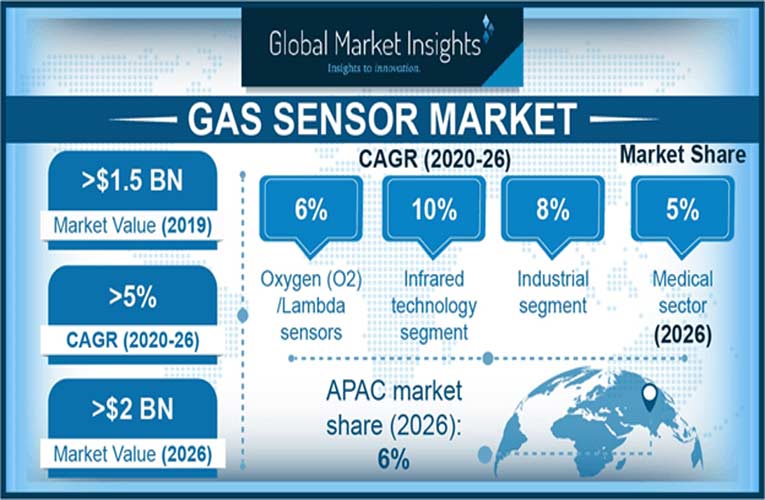
Gas sensors that are used excessively in the medical sector especially for accurately screening early breast cancer have recently gained massive traction. Seeing the advances of gas sensors, Global Market Insights estimated that the gas sensors market could cross USD 2 billion, recording over 80 million-unit shipments by the year 2026. It is estimated that the rising R&D activities done in the medical electronics sector will endow noteworthy strides in the gas sensors market.
According to the recent study done by Global Market Insights, “Rapid integration of IoT, wireless technology, and connected devices to gather accurate real-time data across diverse applications could significantly enhance Gas Sensors Market outlook.”
Carbon monoxide (CO) sensors that are used in P-O-C diagnostic devices for monitoring patient health conditions is witnessing major demand in medical and healthcare applications. Besides, the growing focus on safety and security has fueled the deployment of CO sensors in smart homes, industrial automation, and hospitals.
Other than that, these CO sensors can be used in air monitoring systems to curb the exhaust emission levels and thereby reducing air pollution. The carbon monoxide sensor industry share will witness a growth rate of 7% by 2026.
The gas sensors are also used in hand-held portable instruments for instantaneous readings. The products are experiencing a major demand for ammonia detection in material handling for controlling environmental contaminations. The photoionization detector segment is set to grow rate at 8% CAGR through 2026.
Increasing efforts by the European government for energy-efficiency and emission control standards has fueled the adoption of these sensors in the European automotive industry. In 2019, the European gas sensors market accounted for more than USD 400 million in terms of revenue and is set to grow at 4% through 2026 due to growing digitalization in the German manufacturing industry.
The Asia Pacific market which is dominated by Japan and China is also projected to register substantial growth attributing to the increased use of gas sensors in the automotive, transportation, construction, oil and gas, and chemical industries. Owing to the growing awareness regarding air pollution and its impact on health, the consumers in the Asia Pacific region are making a shift and opting for electronic devices (like smartphones, smartwatches, tablets, laptops, etc.) with embedded air quality sensors.
More and more people in the global gas sensors market are investing in R & D and the development of innovative products. Also, the manufacturers are building strategic alliances with new industries to expand their market offerings. In 2019, Amphenol launched a new series of gas sensors named Telaire T3022, which was designed to make carbon dioxide detections more cost-effective.

